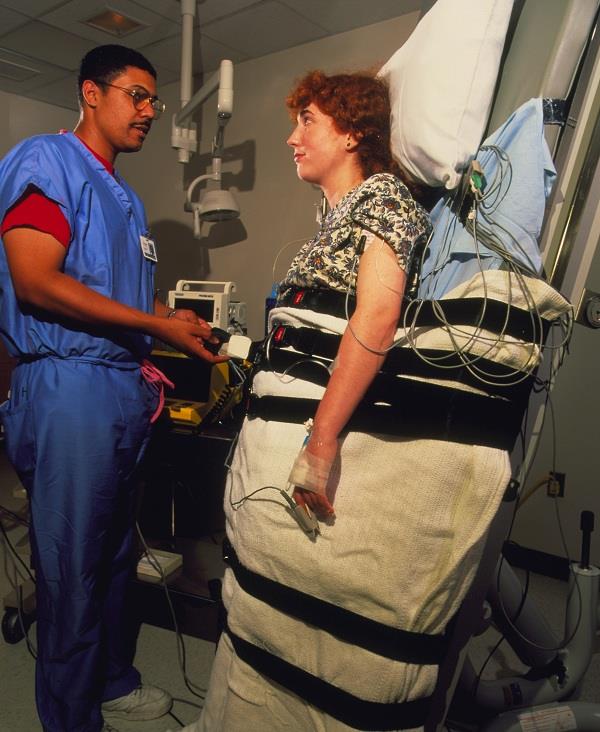Multiple system atrophy (MSA): causes, diagnosis and treatment

Multiple system atrophy (MSA) is a rare neurodegenerative disorder. Symptoms are variable, and can be life-threatening. So can this disease be completely cured? Let's find out with SignsSymptomsList.
content
- What is multiple system atrophy?
- What are the signs and symptoms of multisystem atrophy?
- When should you see a doctor?
- What causes multiple system atrophy?
- What are the complications of multisystem atrophy?
- How is multisystem atrophy diagnosed?
- What treatments help with multisystem atrophy?
What is multiple system atrophy?
Multiple system atrophy (MSA) is a rare neurodegenerative disorder. They affect the autonomic nervous system. They govern blood pressure, breathing, bladder function, and muscle control.
Previously, the disease was known as Shy-Drager syndrome. Multisystem atrophy presents with symptoms similar to Parkinson's disease, such as slowness of movement, muscle stiffness, and impaired balance.
Treatment of multisystem atrophy includes medications and lifestyle changes. Although they do not cure the disease completely, they can help reduce symptoms. The disease will progress gradually and can be life-threatening.
What are the signs and symptoms of multisystem atrophy?
Multisystem atrophy (MSA) affects many organs. Symptoms usually appear in adulthood, usually in the 50s or 60s.
The disease is divided into two types: Parkinson's and cerebellar types. Depending on the type of multisystem atrophy, there are different symptoms.
Parkinson's multisystem atrophy
This is the most common type of multisystem atrophy. Signs and symptoms are similar to those of Parkinson's disease, including:
- Stiff
- Difficulty bending limbs
- Slow limb movements
- Tremor (less common in MSA than in Parkinson's)
- Difficulty changing posture and balance
Cerebellar multisystem atrophy
The main signs and symptoms of this condition are problems with muscle coordination (ataxia). In addition, the patient may also have:
- Reduced mobility and coordination, such as unsteady gait and loss of balance
- Speak slowly or softly (dyslexia)
- Visual disturbances, such as blurred or double vision and difficulty keeping the eye fixed
- Difficulty swallowing or chewing

Affected people may have difficulty speaking, swallowing, and many other symptoms
Some other general signs and symptoms:
In addition to the symptoms mentioned above, some common symptoms of multi-organ atrophy:
- Postural hypotension. The drop in blood pressure when changing positions can make you feel dizzy or light-headed, or even faint.
- Occasionally, a person can also raise their blood pressure to dangerous levels while lying down.
Multisystem atrophy can cause abnormalities in the autonomic nervous system, including:
Urinary and intestinal dysfunction:
- Constipation
- Loss of bladder or bowel control (incontinence)
Sweating abnormally
- Reduces sweat, tears and saliva
- Loss of temperature tolerance due to decreased sweating
- Poor body temperature control, often causing cold hands or feet
Sleep disorders
- Often tired after waking up
- Difficulty breathing at night
Sexual dysfunction
- Inability to achieve orgasm or maintain a penile erection (decreased sexual ability)
- Loss of sexual desire
Cardiovascular problems
- Color change in hands and feet caused by hypoperfusion
- Cold hands and feet
Mental problems
- Difficulty controlling emotions, such as laughing or crying inappropriately
When should you see a doctor?
If you have any of the signs or symptoms that might be associated with multiple system atrophy, see your doctor right away. Your doctor will help you evaluate and accurately diagnose the disease you are suffering from. If you've been diagnosed with multiple system atrophy, go to the hospital right away if you develop new symptoms or your symptoms get worse.
What causes multiple system atrophy?
Experts still don't know the exact cause of multisystem atrophy. They are still working to see if heredity or environment affects the course of the disease. However, there is currently no substantial evidence to support these hypotheses.
Multisystem atrophy damages and shrinks (atrophy) parts of the brain (cerebellum, basal ganglia, and brain stem). These are brain regions that help regulate internal body functions, digestion, and control movement.
Under the microscope, the damaged brain areas of the patients showed nerve cells containing an abnormal protein called alpha-synuclein. Several studies have shown that this protein induces symptoms of multiple system atrophy.
What are the complications of multisystem atrophy?
The course of MSA is complex, but the disease often does not go into remission. The disease progresses gradually and can affect the patient's daily activities.
Some possible complications include:
- Shortness of breath while sleeping
- Injuries from falls due to impaired balance and from fainting
- Because the patient may be bedridden, lesions on the skin may occur
- Loss of physical self-care
- Paralysis of the vocal cords, affecting the voice and difficulty breathing
- Difficulty swallowing gradually increases
Patients usually live 7 to 10 years after the first symptoms of polymyositis appear. However, survival time for people with MSA varies widely from person to person. In rare cases, patients can live up to 15 years or longer. Death is usually due to respiratory failure.
How is multisystem atrophy diagnosed?
Diagnosis of multiple system atrophy (MSA) can be difficult. Some of the signs and symptoms of the disease — such as muscle stiffness and abnormal gait — also occur with other disorders, such as Parkinson's disease. As a result, the diagnosis can be more difficult. A physical examination, with various automated tests and imaging, can help the physician determine if a patient has multisystem atrophy.
In addition, your doctor may recommend additional tests to determine if your symptoms are caused by multisystem atrophy.
If your doctor suspects you have multisystem atrophy, they'll take your medical history and order more blood tests and brain imaging, such as an MRI, to determine if you really have MSA. Are not.
Tilt table test
This test can help your doctor determine if you have an abnormality in blood pressure regulation. This is a routine, you lie on a flat table. The table will be tilted to a 70 degree angle.
During the tilt table test, your doctor will monitor your blood pressure and heart rate.

Study table test
Tests to evaluate autonomic nervous system functions
Doctors may order other tests to evaluate your body's autonomic functions, including:
- Measure blood pressure when the patient is lying and standing
- Test to assess the level of sweating of the body
- Tests to evaluate bladder and bowel function
- Electrocardiogram to monitor the electrocardiogram
In addition, if you have sleep abnormalities, such as snoring or airway abnormalities, your doctor may recommend a sleep assessment. This can help your doctor diagnose an underlying sleep disorder, such as sleep apnea, and get appropriate treatment.
What treatments help with multisystem atrophy?
In fact, there is no complete cure for multiple system atrophy. The main purpose of treatment is to relieve symptoms, thereby helping patients improve their quality of life and maintain organ functions.
To treat specific signs of disease, doctors recommend the following treatment options:
Medicines to help raise blood pressure.
- Fludrocortisone (corticosteroids) and other medicines can help raise blood pressure. This is because corticosteroids help the body retain more salt and water.
- The medicine pyridostigmine can raise blood pressure when you are standing, but not when you are lying down.
- Midodrine can help raise blood pressure quickly. However, Midodrine needs to be prescribed and used with extreme care because it can increase blood pressure while lying down. Therefore, within 4 hours after taking the drug, the patient should not lie down.
- The FDA has approved droxidopa for the treatment of orthostatic hypotension. However, the drug can cause headaches, dizziness and nausea.
Medications to reduce Parkinson's-like symptoms
Some medications used to treat Parkinson's disease, such as levodopa combined with carbidopa, can be used to help relieve Parkinson's-like signs and symptoms, such as stiffness, however, not all Patients with multisystem atrophy respond well to Parkinson's medications. In addition, these drugs may decrease in effectiveness after a few years.
Erectile dysfunction medication
To treat erectile dysfunction, your doctor may prescribe certain medications, such as sildenafil (Viagra).
Control difficulty swallowing and breathing
If you have trouble swallowing, try eating softer foods. If your difficulty swallowing or breathing gets worse, you will likely be fed with a catheter.
Treatment of bladder abnormalities
If you are having problems with bladder control, medication can be effective in the early stages of the disease. However, as the disease progresses, you may need to permanently place a flexible catheter in your bladder to drain urine.
Physiotherapists
A physical therapist can help you keep your mobility and muscles at the best possible level.
Additionally, a linguist can help you improve or maintain your voice.
What measures help control multisystem atrophy?
Doctors often recommend taking the following measures to ease symptoms such as:

People with multiple system atrophy need to eat more fiber
- The diet helps to raise blood pressure . You can add a little salt to your meals and drink more water. Salt and water can increase blood volume and raise blood pressure. In addition, coffee and other caffeinated beverages also help raise blood pressure.
- Elevate your head while sleeping. Elevating your head to an angle of 30° will help keep your blood pressure from getting too high while you sleep. In addition, when you wake up, you should change the lying position to sitting very slowly.
- Healthy diet. Add more fiber to your diet to relieve constipation. You can also use over-the-counter laxatives. In addition, you should eat small meals, and eat less carbohydrates.
- Avoid being in a place that is too hot . Ideally, you should stay in an air-conditioned room on very hot days. Also, you need to avoid letting the water temperature get too hot when bathing.
- Consider wearing pressure socks . They will help you reduce the risk of a sudden drop in blood pressure.
In short, multisystem atrophy is a rare disease. Until now, experts still do not fully understand the pathogenesis of the disease. Manifestations of the disease are very complex, sometimes appearing in the whole body, progressing gradually and can be life-threatening. Therefore, if you suspect you have this disease, see your doctor immediately.
Doctor Vu Thanh Do